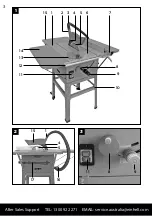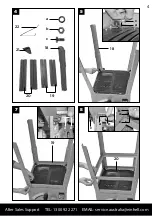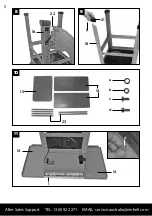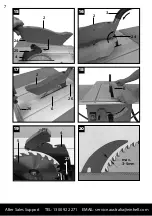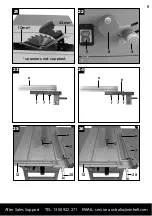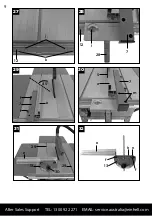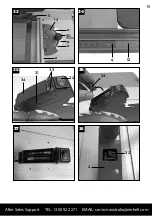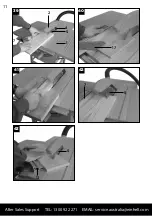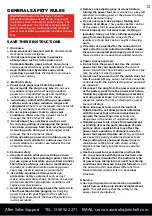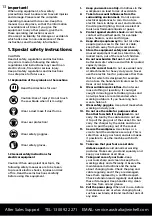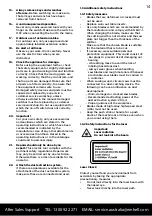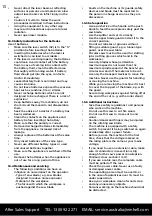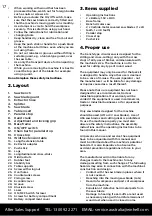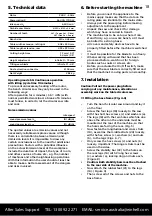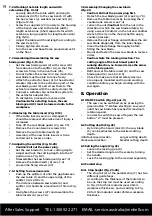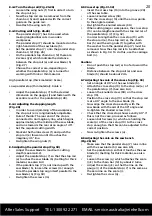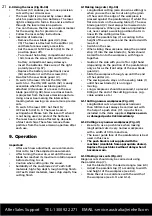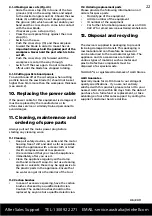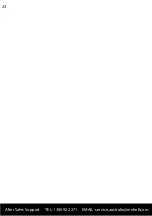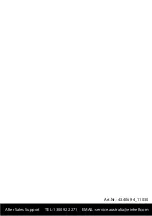
14
After Sales Support TEL: 1300 922 271 EMAIL: [email protected]
15.
Always remove keys and wrenches
after use.
Before switching on, make sure
that all keys and wrenches have been
removed from the tool.
16.
Avoid unsupervised operation.
Never carry mains-powered tools with your
finger on the switch. Make sure the switch is
OFF when connecting the tool to the mains.
17.
Outdoor use of extension cables.
For outdoor use, only use approved and
appropriately labelled extension cables.
18.
Be alert at all times.
Observe your work. Work carefully. Never
use the electric tool when you are
distracted.
19.
Check the appliance for damage.
Before using the equipment further, check
that safety equipment or slightly damaged
parts are in good working order and function
correctly. Check that the moving parts are
working correctly, that they do not jam, and
that no parts are damaged. Make sure that
all parts are fitted correctly, to ensure that
the equipment remains safe to use.
Damaged safety devices and parts must be
repaired or replaced by experts in a
customer service workshop, unless
otherwise stated in the manual. Damaged
switches must be replaced by a customer
service workshop. Do not use equipment for
which the on-off switch does not correctly
function.
20.
Important!
For your own safety, only use accessories
and auxiliaries which are stated in the
operating instructions or which have been
recommended or indicated by the
manufacturer. Use of any other attachments
or accessories than those stated in the
operating instructions or in the catalogue
could lead to personal injury.
21.
Repairs should only be done by an
expert.
This electric tool complies with the
pertinent safety regulations. Repair work
may only be carried out by an electrician.
Otherwise there is a risk of accidents for the
operator.
22.
Attach the dust extraction system.
If there are apparatuses available for the
attachment of the dust extraction system,
make sure these are connected and used.
1.3 Additional safety instructions
1.3.1 Safety measures
•
Blades that are deformed or cracked must
not be used.
•
Replace worn out table inserts.
•
Use only blades which are recommended by
the manufacturer and comply with EN 847-1.
When changing the blade, make sure that
the cutting width is not smaller and the saw
plate not bigger than the thickness of the
splitter.
•
Make sure that the chosen blade is suitable
for the material that is to be cut.
•
If necessary, wear suitable personal
protection equipment. This could consist of:
- Ear plugs to prevent risk of damaging our
hearing.
- A breathing mask to avoid the risk of
inhaling hazardous dust.
- Always wear gloves when handling
saw blades and rough materials. Whenever
practicable, saw blades must be carried in
a container.
•
When sawing wood, circular saws must be
connected to a dust-catching device. The
following can have an influence on dust
development:
- Worn, damaged or cracked saw blades
- Recommended extracting power of the
dust extraction system: 20 m/s
- Proper guidance of the workpiece
•
Blades made of high-alloy high-speed steel
(HSS) must not be used.
•
Keep the push stick or handle for a push
block at the machine at all times, even when
you are not using them.
1.3.2 Safety instructions for the laser
Important:
Laser radiation
Do not look into the beam
Laser Class 2
Protect yourself and your environment from
accidents by taking the appropriate
precautionary measures.
•
Do not look directly into the laser beam with
the naked eye.
•
Never look directly into the laser path.



